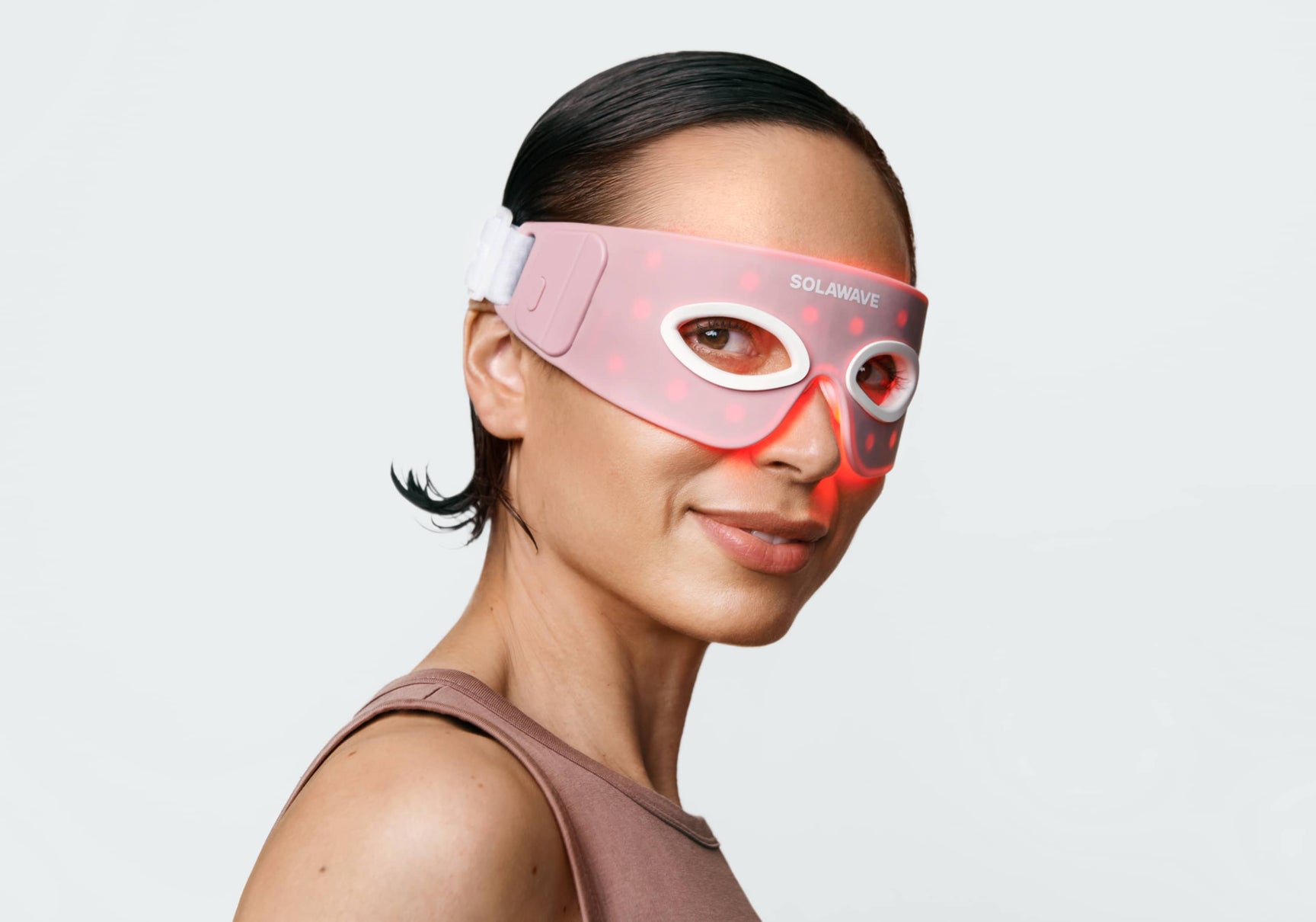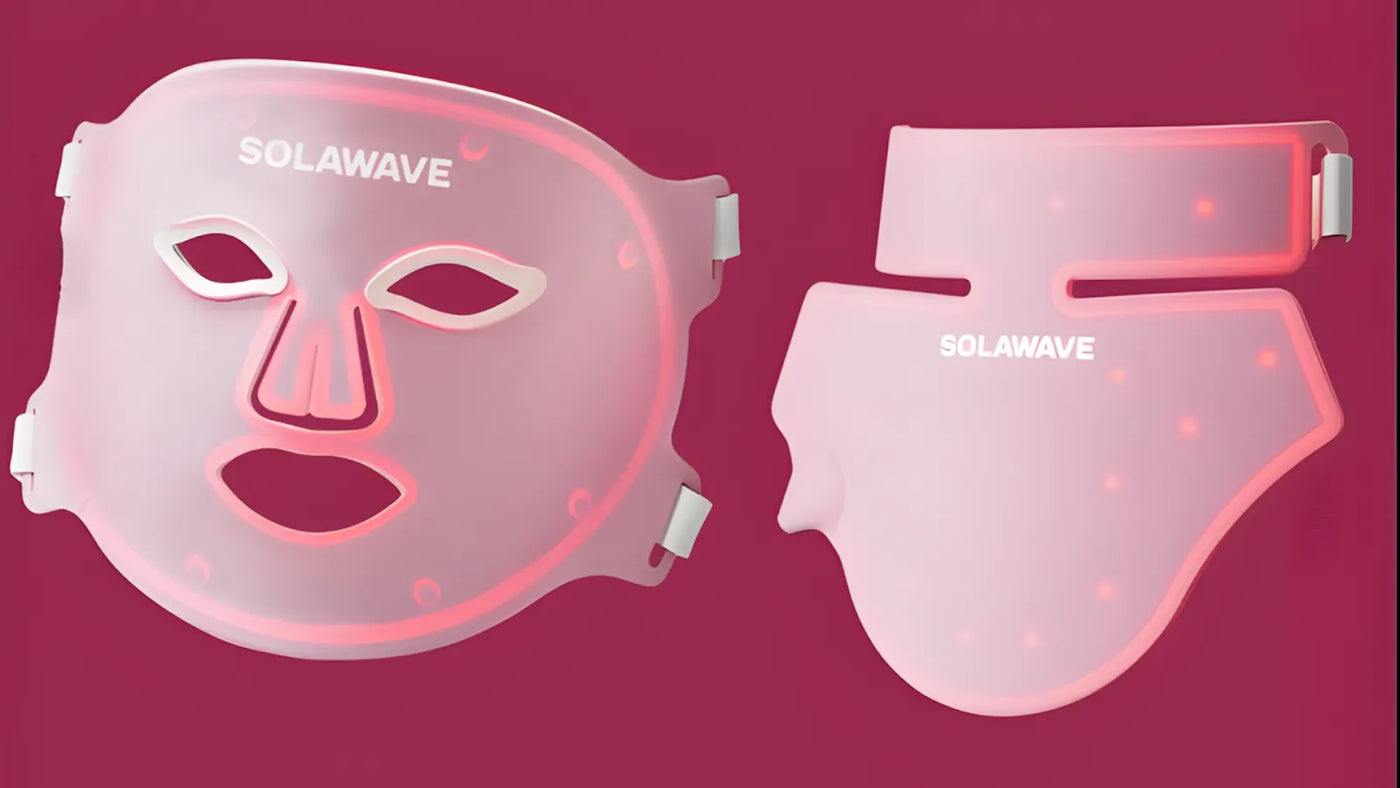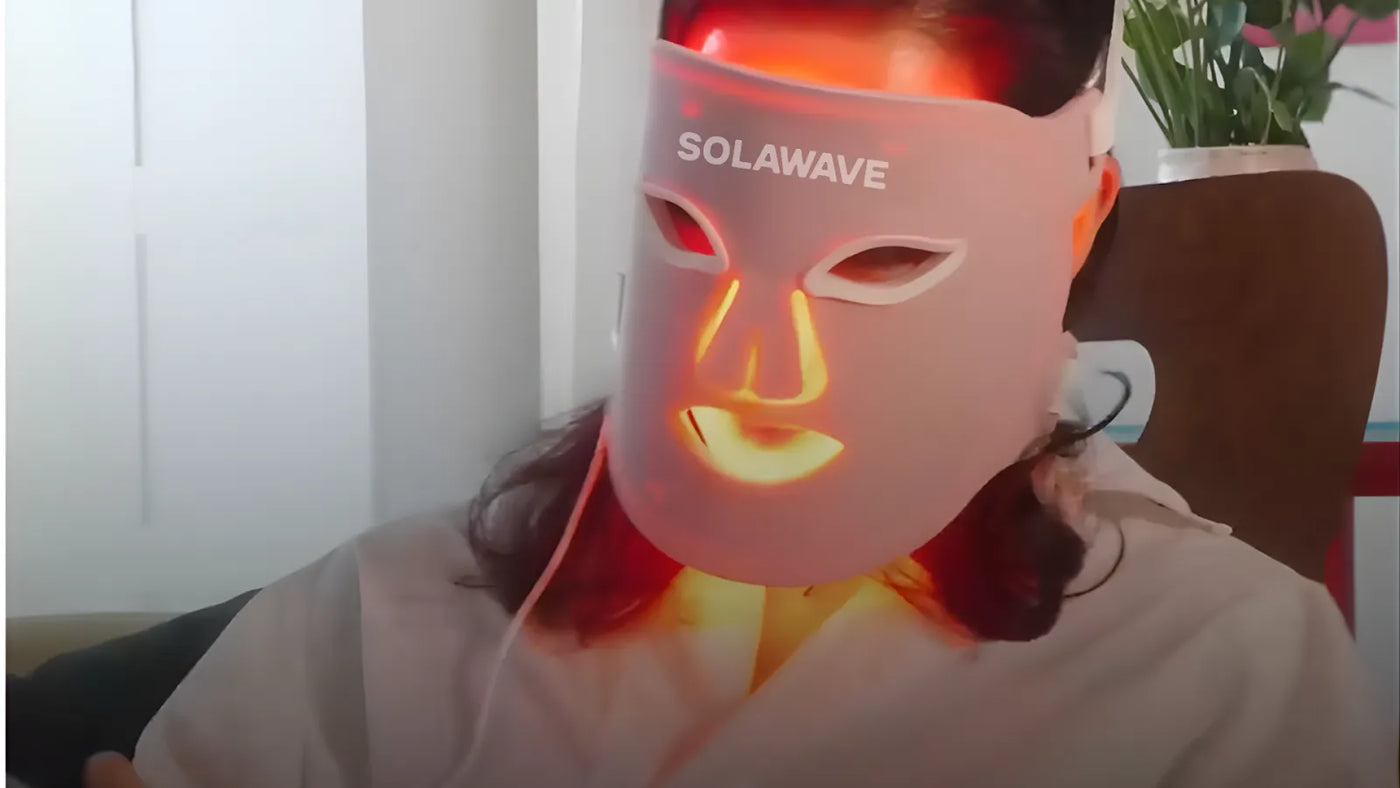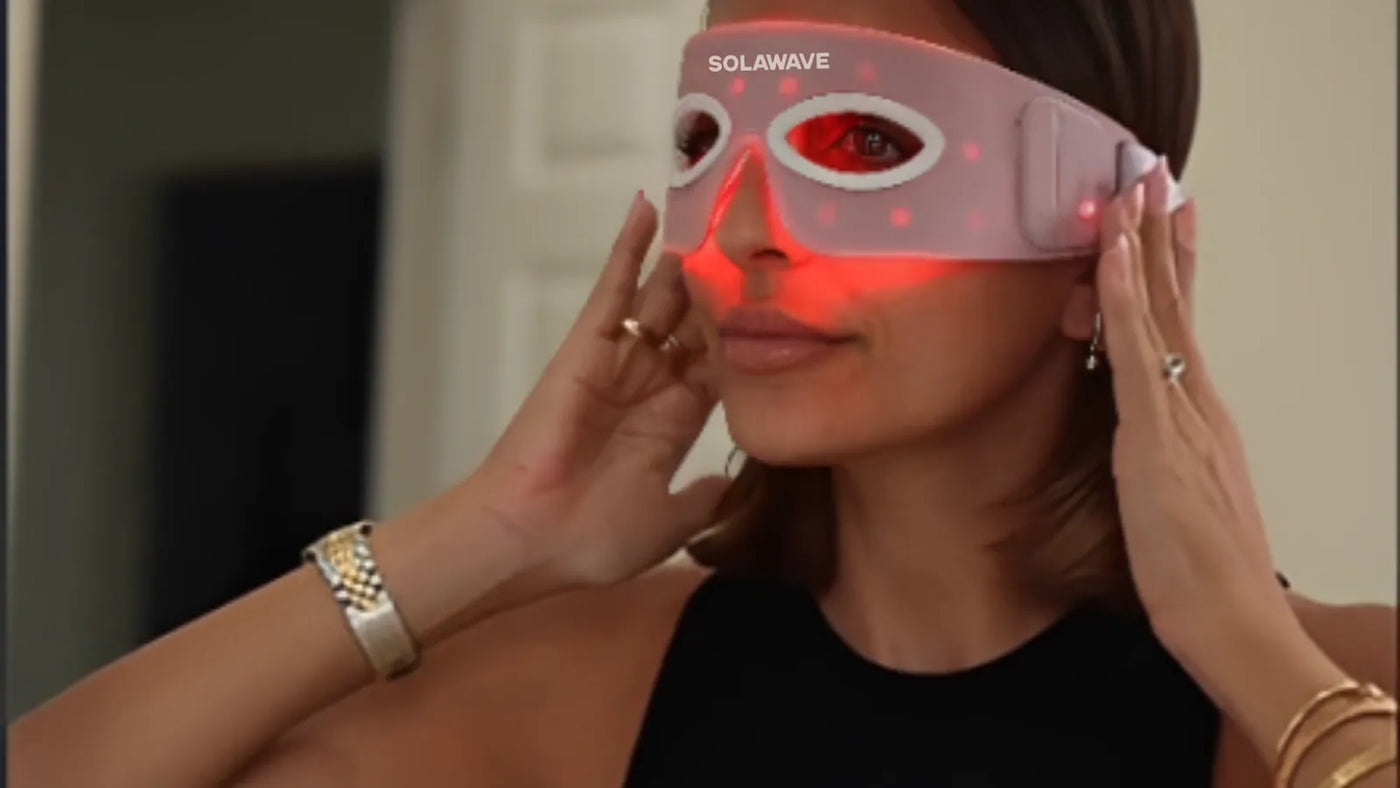

Red Light Therapy For Dark Spots: Can It Help?
If you’ve noticed dark spots or patches of uneven skin tone, you’re not alone. These changes in your skin’s appearance can show up for many reasons, including sun exposure, the natural process of skin aging, or even after a pimple fades. While these spots are common, many people look for ways to achieve a more even, radiant complexion.
Light Therapy has become a popular, gentle option for those who want to support healthier-looking skin without harsh treatments. This non-invasive approach uses specific wavelengths of light to help improve the appearance of your skin, all from the comfort of your home.
Both Red Light and Amber Light Therapy are gaining attention for their potential to visibly reduce the look of dark spots and promote a more even-looking skin tone. In this article, you’ll learn how these forms of Light Therapy work and what you can expect if you’re considering them as part of your skincare routine.
What Are Dark Spots?
Dark spots are areas on your skin that appear darker than the surrounding skin, and is sometimes referred to as hyperpigmentation. These spots can range in size and color, often showing up as light brown, tan, or even deeper shades. They’re sometimes called age spots, sun spots, or post-pimple marks, depending on what caused them.
There are several reasons why dark spots develop. Sun exposure is one of the most common causes—when your skin is exposed to the sun’s rays, it produces more melanin, which can lead to patches of darker skin over time. The natural process of skin aging can also make dark spots more noticeable, as your skin’s ability to renew itself slows down. Pimples can leave behind marks after they heal, especially if you tend to pick at them. Hormonal changes, such as those that happen during pregnancy or with certain medications, can also trigger dark spots.
These spots can make your skin look uneven and may draw attention away from your natural glow. Many people find that dark spots affect how smooth and radiant their skin appears, which is why finding gentle, effective ways to address them is a common skincare goal.
What Is Light Therapy?
Light Therapy, sometimes called photobiomodulation, uses specific wavelengths of light to interact with your skin at a cellular level and promote visible skin rejuvenation. This gentle, non-invasive approach helps support your skin’s natural renewal and repair processes, making it a popular choice for those looking to improve their skin’s appearance without harsh treatments.
There are several types of Light Therapy, each using a different color of light to reach various layers of your skin:
-
Red Light Therapy: Uses red wavelengths that penetrate deeper into the skin, supporting healthy collagen production. This can help your skin look firmer, smoother, and more radiant over time.
-
Amber Light Therapy: Uses amber wavelengths that target the upper layers of your skin, helping to promote a more even-looking skin tone and reduce the appearance of dark spots.
-
Blue Light Therapy: Uses blue wavelengths that focus on the surface of your skin, often used to help with the appearance of pimples.
Light Therapy devices, like those from Solawave, use medical-grade LEDs to deliver these specific wavelengths safely and effectively. You can easily incorporate these devices into your skincare routine at home, using them a few times a week to support your skin’s natural processes. With regular use, many people notice visible improvements in their skin’s texture, tone, and overall radiance.
Can You Use Red Light Therapy for Dark Spots?
Red Light Therapy uses specific wavelengths of red and near-infrared light to reach deeper layers of your skin. When these wavelengths interact with your skin cells, they help convert light into usable energy, supporting your skin’s natural renewal and repair processes. One of the key benefits of Red Light Therapy is its ability to support healthy collagen production. Collagen is a protein that gives your skin its firmness, smoothness, and resilience, but it naturally declines as you age.
By encouraging your skin to produce more collagen, Red Light Therapy helps your skin look firmer, smoother, and more radiant over time. Many people notice a visible reduction in the look of fine lines and wrinkles, along with an overall improvement in skin texture and brightness. With consistent use—about three to five times per week—these benefits become more noticeable, helping your skin appear rejuvenated and refreshed.
Amber Light Therapy for More Even-Looking Skin Tone
Amber Light Therapy uses a different wavelength that targets the upper layers of your skin. This gentle light is especially effective at visibly brightening dark circles, reducing the look of puffiness, and promoting a more even-looking skin tone. Amber Light Therapy is often included in advanced devices, like the Solawave Eye Recovery Pro Mask, alongside Red and Near-Infrared Light Therapy for a comprehensive approach to skin appearance.
While Red Light Therapy focuses on supporting healthy collagen production and improving firmness, Amber Light Therapy is designed to address uneven tone and the look of dark spots.
By combining both therapies, you can help your skin look brighter, smoother, and more even, especially in delicate areas like under the eyes. Amber Light Therapy is a great choice if you’re looking to visibly reduce the appearance of dark spots and achieve a more balanced, radiant complexion.
Targeting Dark Spots Around the Eyes: The Eye Recovery Pro Mask
The Solawave Radiant Renewal Eye Recovery Pro Mask is designed to target the delicate skin around your eyes, where dark circles and dark blemishes often appear alongside wrinkles and other age and damage-related skin concerns. This hands-free, wearable device uses a combination of four targeted wavelengths—Amber Light, Red Light, Deep Red Light, and Near-Infrared Light Therapy—to deliver a comprehensive treatment in just three minutes per session.
Amber Light Therapy (605nm) is especially effective at visibly brightening dark circles and evening out skin tone. When paired with Red and Deep Red Light Therapy, the mask helps support healthy collagen production, which can make the skin look firmer and smoother. Near-Infrared Light Therapy works to refresh tired-looking eyes and reduce the visible signs of fatigue.
With regular use, you may notice that the skin under your eyes appears brighter, more even, and less puffy. The mask is designed for comfort and convenience, allowing you to use it while going about your daily routine. By combining multiple wavelengths, the Solawave Eye Recovery Pro Mask offers a gentle, non-invasive way to address dark circles and dark blemishes, helping you achieve a more radiant and refreshed look around your eyes.
Combining Light Therapy With Other Visibly Brightening Skincare Habits
Combining Light Therapy with other visibly brightening skincare habits can help you get the most out of your routine.
Light Therapy devices like the Solawave Eye Recovery Pro Mask, are easy to use and fit seamlessly into your daily schedule. For best results, use your Light Therapy device on clean, dry skin, ideally after applying a targeted eye cream.
A product like the Solawave LightBoost Collagen + Caffeine Eye Cream is specially formulated to enhance the effects of Light Therapy. This lightweight, fragrance-free cream uses a blend of vegan collagen to support firmness, caffeine to visibly reduce puffiness and dark circles, and multi-peptides to smooth the look of fine lines. Applying this cream before your Light Therapy session helps hydrate and prep the delicate skin around your eyes, making your treatment even more effective.
Tips To Prevent Dark Spots
Preventing dark spots and dark circles involves a combination of daily habits and mindful skincare choices.
Sun protection is one of the most important anti-aging preventative steps you can take. UV rays from the sun can trigger the development of new dark spots and make existing ones more noticeable. Apply a broad-spectrum sunscreen with at least SPF 30 every morning, even on cloudy days, and reapply every two hours if you’re spending time outside. Wearing sunglasses and a wide-brimmed hat can also help shield the delicate skin around your eyes from sun exposure.
Getting enough sleep is another key factor in preventing dark circles. Aim for seven to nine hours of restful sleep each night to help your skin look refreshed and well-rested. Elevating your head with an extra pillow can also reduce fluid buildup under your eyes, which may help minimize puffiness and the appearance of dark circles.
Gentle skincare is essential for prevention. Avoid harsh scrubbing or picking at your skin, as this can cause irritation and lead to lingering marks after a pimple or irritation fades. Instead, use mild cleansers and hydrating moisturizers to support your skin’s natural barrier. Look for products with ingredients like vitamin C, niacinamide, or peptides, which can help brighten and even out your skin tone over time.
Managing allergies and reducing eye rubbing can also help prevent dark circles. Allergies can cause inflammation and swelling, making the under-eye area look darker. If you notice frequent irritation, consider using a gentle, fragrance-free eye cream and consult with a dermatologist about allergy management.
Finally, maintaining a healthy lifestyle—staying hydrated, eating a balanced diet rich in antioxidants, and managing stress—can all contribute to a brighter, more even complexion. By combining these habits with Light Therapy and targeted skincare, you can help prevent the development of new dark spots and dark circles while supporting your skin’s natural radiance.
Conclusion
Exploring Light Therapy can be a gentle, effective way to support healthier-looking, more even skin. By adding Red Light or Amber Light Therapy to your routine, you’re giving your skin the opportunity to look brighter and more refreshed over time. Remember, visible changes don’t happen overnight—consistency and patience are key. Stick with your routine, and you’ll likely notice your skin gradually appearing more radiant and even-toned.






















